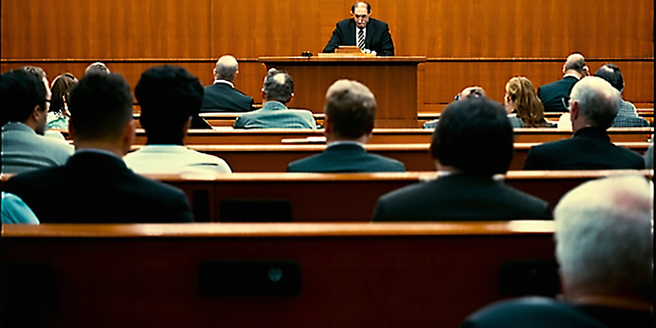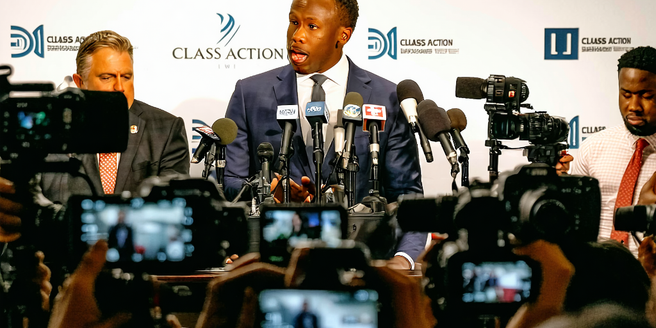
Understanding Class Action Cases
| Aspect | Description | Examples |
| Definition | A lawsuit filed by one or more plaintiffs on behalf of a larger group. | Consumer fraud, antitrust violations. |
| Plaintiffs | Individuals representing the group known as the class. | Lead plaintiff(s) in product liability case. |
| Class Members | The broader group of individuals who share similar claims. | Customers affected by false advertising. |
| Certification | Court approval that the lawsuit meets class action criteria. | Judicial certification hearing. |
| Objectives | To resolve claims efficiently and economically. | Economic redress, corrective measures. |
The Role of Plaintiffs in Class Actions
In class action lawsuits, plaintiffs play a pivotal role as both representatives and catalysts for collective legal action. These individuals, often referred to as lead plaintiffs or representative plaintiffs, initiate the lawsuit on behalf of themselves and other similarly affected parties. Their primary responsibility is to represent the interests of the entire class, ensuring that the claims are adequately presented. By stepping forward, plaintiffs facilitate access to justice for those who might not have the resources or knowledge to pursue individual litigation. In selecting a lead plaintiff, courts consider factors such as the individual’s connection to the case and their ability to represent the class responsibly. This role demands active engagement with legal counsel and a commitment to the common good. Ultimately, plaintiffs in class actions enable the collective power needed to challenge entities that may have otherwise acted without accountability.
Common Causes for Class Action Lawsuits
Class action lawsuits are often driven by the collective grievances of a large group of individuals who have been impacted negatively by similar issues. One common cause is consumer fraud, where companies are accused of deceptive practices, misleading advertising, or selling defective products. This type of lawsuit seeks to hold corporations accountable for breaching trust and causing financial loss or harm to consumers.
Another frequent cause is employment-related disputes. These cases often involve allegations of wage and hour violations, such as unpaid overtime or denied meal breaks, as well as discrimination or harassment within the workplace. This legal recourse empowers employees to unify against unfair practices and seek justice.
Product liability is also a major cause, where manufacturers may face lawsuits due to the harm caused by defective or dangerous products. This includes pharmaceuticals with undisclosed side effects or vehicles with faulty parts that compromise safety. Class actions enable affected individuals to collectively seek compensation and push for corporate responsibility.
Settlement Negotiations Explained
Settlement negotiations are a pivotal aspect of resolving disputes efficiently and amicably before they escalate to courtroom battles. These negotiations occur when two or more parties involved in a legal dispute engage in discussions to reach an agreement that satisfies all involved. The process is often seen as a more cost-effective and time-saving alternative to litigation. Successful settlement negotiations require clear communication, mutual understanding, and a willingness to compromise.
Both parties typically present their positions, demands, and expectations through their legal representatives. An effective settlement negotiation allows each party to feel heard and respected, creating a conducive environment for resolution. Key factors like the strength of the case, potential costs, and the risks of proceeding to trial influence the terms agreed upon. Ultimately, the goal is to craft a mutually acceptable agreement that prevents further legal proceedings, thus preserving relationships and reducing stress for all parties involved.
Impact of Settlements on Class Members
When a settlement is reached in a class action lawsuit, its impact on class members can vary significantly. For many, it offers a sense of closure and justice, providing compensation for grievances that might not have been addressed individually. Settlements can also streamline legal proceedings, saving time and resources for plaintiffs who would otherwise face lengthy court battles. However, the allocation of settlement funds can be a contentious issue. Class members may receive compensation that feels insufficient relative to their individual losses due to the broad nature of class agreements. Additionally, it’s not uncommon for a significant portion of the settlement fund to be allocated to legal fees and administrative costs, further reducing the payout to individual class members. Therefore, while settlements can be a practical resolution, they may not always equate to equitable or satisfactory outcomes for all involved.
How Attorneys Facilitate Settlements
Attorneys play a pivotal role in facilitating settlements, providing both expertise and strategic guidance throughout the negotiation process. From the onset, attorneys assess the merits and weaknesses of a case, helping clients establish realistic expectations for settlement outcomes. With their deep understanding of legal principles and precedents, they present persuasive arguments, highlighting the advantages of settling over proceeding to trial. Attorneys leverage their negotiation skills to engage in meaningful discussions with the opposing party, often utilizing alternative dispute resolution methods like mediation or arbitration to reach a consensus. They meticulously draft settlement agreements, ensuring terms are clear, enforceable, and comprehensive, protecting clients’ best interests and minimizing future disputes. Additionally, attorneys often serve as objective advisors, focusing on long-term benefits rather than immediate emotional reactions, guiding clients through the complexities of legal and financial considerations involved in reaching an amicable resolution.
Benefits and Drawbacks of Settlements
Settlements, particularly in legal and financial contexts, offer both appealing benefits and challenging drawbacks that individuals and entities must carefully consider. One of the primary advantages is the quicker resolution that settlements often afford compared to protracted court battles. This not only saves time but also reduces the substantial costs associated with continued litigation. Moreover, settlements allow parties to maintain a degree of privacy, as they can avoid the public scrutiny that often accompanies a court case.
However, despite these benefits, there are inherent drawbacks to settling. Financially, parties might receive less than what they could potentially gain through a court ruling. Additionally, settling may encourage a sense of unresolved conflict, where one or both parties feel justice has not been fully served. Lastly, settlements can sometimes perpetuate unfair practices, particularly when larger entities leverage their power to settle disputes to silence or financially burden less powerful parties. Thus, weighing these factors is essential for any party considering a settlement.
Distribution of Settlement Funds
When discussing the distribution of settlement funds, it’s crucial to understand the structured process behind how these funds are allocated among parties involved in a legal dispute. Typically, once a settlement is reached, the total sum is divided based on an agreed-upon framework that reflects the interests and claims of all stakeholders. The first priority usually goes to covering legal fees and any outstanding debts related to the case. Afterward, plaintiffs receive compensation based on the degree of harm or loss they have suffered, which is often determined through negotiation or mediation. Particular attention is paid to ensuring that the funds are distributed in a fair and equitable manner, catering to the most significantly impacted parties first. This process can be complex, especially in class-action lawsuits, where numerous plaintiffs are involved, each with differing levels of damages and claims.
Legal Precedents in Class Action Settlements
Class action settlements often act as a focal point for significant legal precedents, setting benchmarks for future cases and shaping the landscape of collective litigation. These precedents arise from the intricate weaving of judicial rulings, which often address complex issues like fairness, adequacy, and representation. A notable example is the landmark case of Amchem Products, Inc. v. Windsor, which emphasized the necessity of commonality among class members, thereby influencing the certification criteria applied by courts. These precedents ensure that class action principles evolve in tandem with emerging societal norms and judicial trends. Moreover, they compel corporations to uphold higher standards of accountability, mindful of the far-reaching implications of their actions. As courts continue to interpret and refine these legal standards, the body of precedents grows, charting a clearer path for both plaintiffs and defendants navigating the intricate terrain of class action litigation.
Future Trends in Class Action Settlements
Class action settlements are undergoing significant transformation as we move further into the digital age. The future of these settlements is being shaped by emerging technologies, regulatory changes, and evolving consumer expectations. One prominent trend is the increasing use of technology to streamline legal processes. Blockchain technology is being explored to enhance transparency and efficiency in settlements, ensuring that all parties have access to immutable records of proceedings and distributions.
Moreover, artificial intelligence is being utilized to analyze vast amounts of data quickly, identifying potential class members and predicting settlement outcomes. This will likely reduce the time and cost associated with lengthy negotiations and trials. Additionally, there is a growing emphasis on more personalized and immediate compensation methods, such as digital payments, which cater to the tech-savvy modern claimant.
Finally, global coordination is expected to become more prominent as multinational corporations face class actions that transcend borders, necessitating a more harmonized legal approach.

